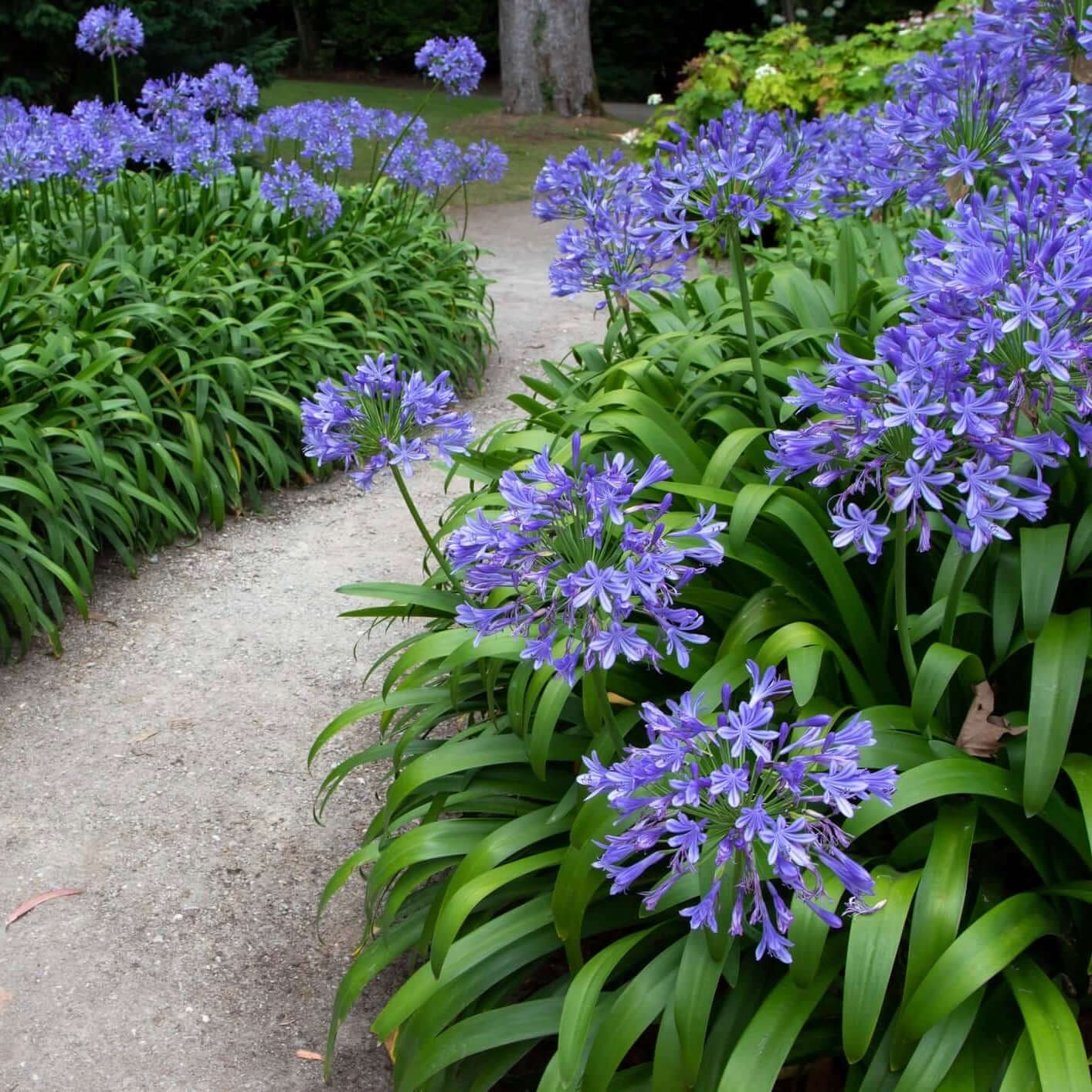Growing Agapanthus: A Total Guide to Beautiful Blooms
Growing Agapanthus: A Total Guide to Beautiful Blooms
Blog Article
Mastering the Art of Agapanthus Treatment: Necessary Steps for Healthy Development and Dynamic Blossoms
In the realm of gardening, the farming of agapanthus stands as a gratifying undertaking for those who look for to support these stylish blooming plants. From selecting the ideal variety to grasping trimming techniques, the journey in the direction of cultivating thriving agapanthus plants is complex and holds the vital to opening the full capacity of these agricultural gems.

Picking the Right Agapanthus Variety

When selecting the right Agapanthus selection for your yard, think about factors such as environment suitability, bloom color, and growth habit. Agapanthus, commonly recognized as Lily of the Nile or African lily, comes in a range of shades ranging from tones of purple and blue to white. Pick a blossom shade that complements your existing garden combination to produce a harmonious landscape. Additionally, consider the climate in your area to guarantee the Agapanthus variety you select can flourish in your particular problems. Some ranges are much more forgiving of cool temperatures, while others choose warmer climates. Comprehending the growth routine of different Agapanthus varieties is important for appropriate positioning within your garden. Some selections have a clumping growth practice, ideal for containers or borders, while others have an even more dispersing nature, suitable for ground cover or mass growings. By thoroughly evaluating these variables, you can select the ideal Agapanthus range to improve the charm of your garden.
Perfect Planting Problems
Taking into consideration the ideal environmental requirements is essential for effective Agapanthus cultivation. Agapanthus grows in well-draining dirt with a somewhat acidic to neutral pH degree. When growing, pick a place that obtains full sunlight to partial shade. In hotter environments, supplying some mid-day color can stop scorching of the leaves. Agapanthus plants are delicate to cool temperature levels and need to be protected from frost throughout winter season.
To make certain healthy growth and lively blossoms, plant Agapanthus bulbs at a depth of regarding 2-4 inches and area them 8-12 inches apart. Mulching around the base of the plants helps keep dampness and subdues weed growth.
Watering and Feeding Tips
Preserving correct dampness levels and supplying vital nutrients are vital components in the care routine for Agapanthus plants. It is important to strike a balance when it comes to sprinkling Agapanthus. If overwatered, these plants prefer consistently wet dirt but are susceptible to root rot. Throughout the expanding season, water deeply as soon as a week, making certain the soil is well-draining to protect against waterlogging. In hotter climates or during durations of dry spell, even more frequent watering may be essential to maintain the soil evenly wet. Nevertheless, lower watering in the winter to avoid waterlogged conditions.
Feeding Agapanthus is essential for promoting healthy and balanced growth and prolific flowers. Apply a balanced fertilizer, such as a 10-10-10 formula, in the very early spring as brand-new development emerges. By complying with these watering and feeding ideas, you can guarantee your Agapanthus plants grow and create lively, long-lasting blossoms.
Trimming Methods for Agapanthus
Trimming Agapanthus plants at the ideal times and with correct techniques is vital for maintaining their wellness and advertising ideal growth and flowering. The suitable time to prune Agapanthus is in late winter or very early springtime prior to brand-new growth arises.
Deadheading spent blossoms can additionally redirect the plant's energy into creating even more blooms instead than setting seeds. If you want to gather seeds for proliferation, leave look at this website some flowers to dry and fully grown on the plant.
Bear in mind to make use of clean, sharp devices to make specific cuts and minimize the risk of presenting illness. Agapanthus. Regular trimming will assist keep your Agapanthus looking cool and healthy while guaranteeing a bountiful screen of attractive blooms
Handling Typical Parasites and Conditions
After guaranteeing appropriate pruning methods for Agapanthus, it is crucial to address typical parasites and diseases that can influence the wellness and vitality of these plants. One usual insect that influences Agapanthus is the Agapanthus gall midge.
Furthermore, Agapanthus plants can experience from root rot if they are planted in improperly draining pipes dirt. By being vigilant and taking prompt action versus insects and conditions, you can aid your Agapanthus plants thrive and generate lively blossoms. Agapanthus.

Conclusion
In verdict, understanding the art of agapanthus treatment involves choosing the ideal range, giving perfect growing conditions, appropriate watering and feeding, appropriate trimming strategies, and resolving common parasites and illness. By following these crucial steps, you can ensure healthy and balanced growth and vivid blooms for your agapanthus plants. Keep in mind to on a regular basis keep an eye on and keep your plants to promote their total health and long life.
To ensure healthy and balanced growth and site link dynamic blossoms, plant Agapanthus light bulbs at a deepness of about 2-4 inches and area them 8-12 inches apart. By adhering to these watering and fertilizing suggestions, you can guarantee your Agapanthus plants thrive and produce vibrant, lasting blooms.
One common parasite that affects Agapanthus is the Agapanthus gall midget. Additionally, Agapanthus plants can experience from root rot if they are planted in poorly use this link draining pipes soil. By complying with these vital steps, you can make certain healthy and balanced development and vibrant flowers for your agapanthus plants.
Report this page